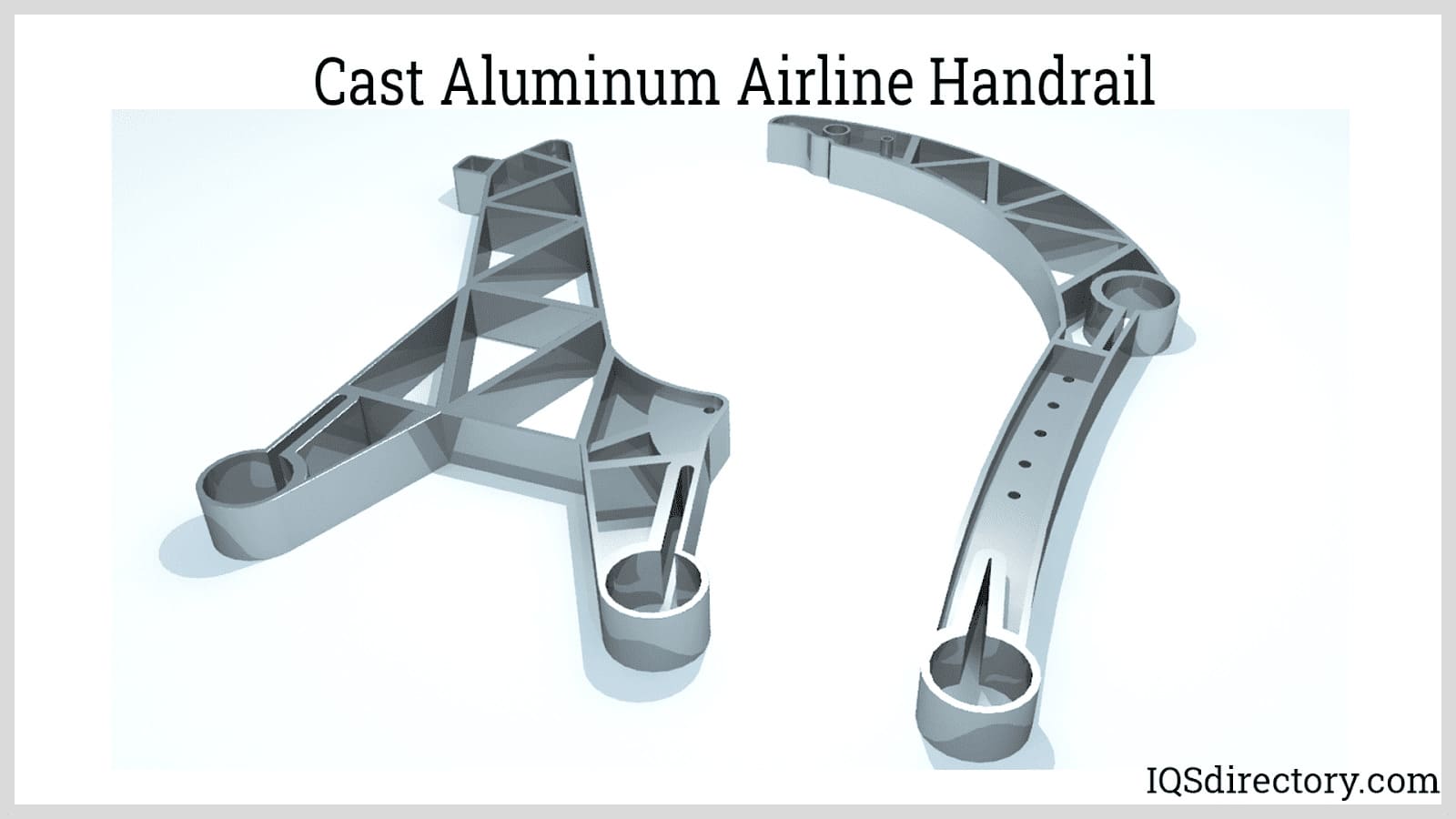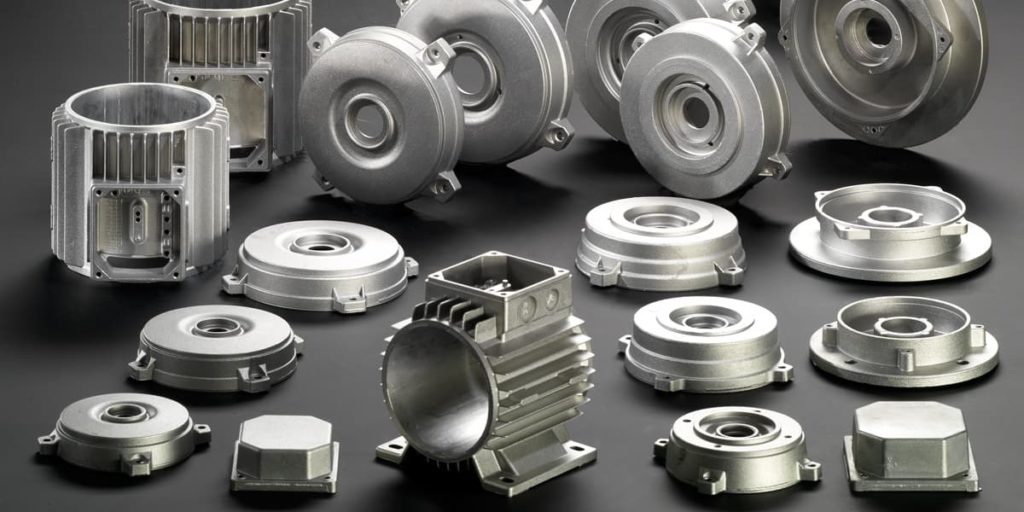Understanding the material properties of Aluminum Castings and their applications
Wiki Article
Exactly How Aluminum Foundry Adds To Cutting-edge Solutions in Steel Construction
Aluminum shops significantly affect the landscape of steel manufacture. They embrace advanced casting techniques that boost precision and style versatility. This ability enables the production of durable and light-weight elements that cater to varied sector demands. The combination of automation and lasting methods sets a benchmark for effectiveness. As these shops develop, they question concerning the future of manufacturing and the function of advancement fit the market.The Function of Aluminum Foundries in Modern Manufacturing
Aluminum foundries play an important function in contemporary manufacturing, adding significantly to various industries, including vehicle, aerospace, and durable goods. These facilities specialize in the melting and spreading of aluminum, transforming basic materials right into premium components that meet rigorous market standards. The light-weight yet strong residential properties of Aluminum make it an excellent choice for suppliers intending to improve efficiency while reducing weight, especially in the auto market, where gas effectiveness is extremely important.Aluminum foundries use cutting-edge procedures to generate complex shapes and styles that cater to particular market demands. By leveraging sophisticated technologies such as computer-aided design and simulation, these factories can enhance their production processes and improve material utilization. This not only boosts the top quality of the end products however additionally lessens waste, adding to even more sustainable production methods. Ultimately, the payments of Aluminum foundries are critical for driving advancement and performance throughout multiple markets.
Advanced Casting Techniques Changing Steel Manufacture
Advanced casting strategies are changing the area of steel fabrication, specifically through accuracy casting techniques that improve precision and minimize waste. Ingenious alloy advancements are also playing an important function, enabling personalized homes and improved performance in numerous applications. Together, these developments are setting new standards in effectiveness and quality within Aluminum factories.Precision Casting Techniques
As the need for premium elements in numerous industries continues to increase, precision casting techniques have become a transformative pressure in steel fabrication. These methods, consisting of financial investment spreading, shed foam spreading, and pass away casting, enable elaborate geometries and tight tolerances that standard approaches often struggle to attain. By using advanced materials and innovations, accuracy spreading decreases waste and improves efficiency, allowing suppliers to generate complex get rid of decreased preparations. In addition, these methods give exceptional surface area coatings and mechanical buildings, making them optimal for markets such as aerospace, automobile, and clinical devices. As producers increasingly embrace accuracy casting, the capability to meet certain style demands while maintaining cost-effectiveness ends up being a pivotal advantage in today's open market.Cutting-edge Alloy Dopes
Innovative alloy advancements are reshaping the landscape of steel fabrication, specifically within the domain of precision casting. Advancements in material scientific research have actually resulted in the development of specialized Aluminum alloys that improve toughness, resistance, and toughness to deterioration. These novel alloys enable shops to generate detailed elements with improved mechanical homes, accommodating varied sectors such as aerospace, vehicle, and electronics. The unification of sophisticated casting techniques, consisting of die casting and sand spreading, further maximizes the usage of these products, permitting for complicated geometries and decreased waste. As an outcome, producers are much better furnished to meet rigid performance criteria while lessening ecological effect. Inevitably, these innovative alloys are leading the way for a brand-new period of effectiveness and sustainability in steel fabrication.Light-weight and Sturdy: The Advantages of Aluminum Elements
Aluminum components supply considerable benefits in numerous applications as a result of their lightweight nature and longevity. This mix adds to boosted gas effectiveness, especially in the aerospace and auto markets. Furthermore, light weight aluminum's intrinsic rust resistance further expands the life expectancy of items, making it a preferred choice in many steel manufacture procedures.Enhanced Fuel Effectiveness
While conventional products have actually long been the criterion in various industries, the change in the direction of Aluminum components is reinventing the landscape of steel construction, especially in connection with enhanced fuel effectiveness. Aluminum's lightweight nature especially decreases the general weight of automobiles and equipment, permitting for enhanced efficiency and lowered power intake. This decrease in weight equates straight to reduced gas intake, making Aluminum an eye-catching alternative for suppliers aiming to fulfill rigid ecological laws. In addition, light weight aluminum's resilience guarantees that components maintain their integrity in time, adding to long-term efficiency. As markets progressively prioritize sustainability, the adoption of Aluminum parts comes to be a tactical option, aligning functional objectives with environmental responsibility while enhancing fuel performance in numerous applications.Rust Resistance Benefits
Among the standout features of Aluminum parts is their remarkable corrosion resistance, which considerably improves the longevity and dependability of various applications. This residential property is particularly helpful in severe settings, such as commercial and marine setups, where exposure to dampness and chemicals can result in considerable deterioration in other steels. Unlike steel, Aluminum normally develops a safety oxide layer that serves as an obstacle versus environmental components, minimizing the danger of rust and rust. Consequently, Aluminum elements call for less upkeep and have a longer service life, making them a cost-efficient option for suppliers. This fundamental resilience not just adds to the general efficiency of products however likewise supports sustainability efforts by minimizing the need for frequent replacements.Technologies in Design and Engineering Via Aluminum Foundries
As advancements in Aluminum Foundry innovation proceed to reshape the landscape of steel construction, cutting-edge layout and engineering options are arising to fulfill the demands of diverse industries. The convenience of Aluminum permits intricate styles that were previously unattainable with standard products. Shops are leveraging computer-aided style (CAD) software application like this and simulation devices to optimize the layout procedure, allowing engineers to develop light-weight yet robust components customized to certain applications.The ability to incorporate innovative alloying strategies learn this here now permits the customization of Aluminum homes, improving stamina and durability. This flexibility cultivates imagination in product development, allowing business to explore new shapes and structures that boost performance while minimizing weight. Collective efforts in between developers and factories assist in fast prototyping, resulting in shorter task timelines and increased total effectiveness. These developments not just improve product efficiency however also drive sustainability by decreasing product waste during the construction process.
Enhancing Performance With State-Of-The-Art Innovation
Advancements in modern technology are reinventing the performance of Aluminum shops, improving processes from style to production. Automation plays an essential duty, with robotic systems boosting the speed and accuracy of jobs such as molding, pouring, and ending up. These automated services decrease human mistake and lower labor expenses, while also boosting result consistency.In addition, the combination of advanced software application for computer-aided layout (CAD) and simulation allows for quick prototyping and screening, quickening the shift from idea to manufacturing. Foundries are using real-time information analytics to keep an eye on procedures, guaranteeing peak efficiency and decreasing downtime.
Furthermore, 3D printing modern technology is being taken on for creating complex molds and elements, lowering product waste and preparation. The mix of these advanced modern technologies not only increases efficiency however additionally boosts the high quality of Aluminum products, positioning factories at the leading edge of advancement in steel manufacture.
Sustainable Practices in Aluminum Foundries
A growing number of Aluminum foundries are adopting sustainable methods to minimize their ecological influence and advertise source efficiency. Wisconsin Aluminum Foundry. These shops are increasingly implementing recycling programs, where scrap Aluminum is collected and reprocessed, significantly lessening waste. In addition, energy-efficient technologies, such as electrical heaters and progressed insulation products, are being used to reduced power intake throughout the melting processWater conservation strategies are likewise getting grip, with numerous foundries reusing water in cooling systems to decrease overall use. In addition, the fostering of environment-friendly coatings and additives decreases dangerous discharges without compromising item high quality.
Future Trends in Aluminum Spreading and Metalworking
Significantly, the future of Aluminum casting and metalworking is being shaped by technical technologies and evolving industry requirements. Developments in automation and robotics are simplifying procedures, enhancing precision, and lowering labor prices. The adoption of additive production techniques, such as 3D printing, is changing traditional spreading approaches, enabling intricate geometries and reduced product waste.The combination of fabricated intelligence and data analytics is making it possible for real-time monitoring and predictive upkeep, which maximizes production performance. Sustainability remains a core focus, with business purchasing environmentally friendly practices, including the recycling of Aluminum scrap and using renewable energy sources in manufacturing.
As the demand for lightweight, long lasting materials in numerous markets boosts, Aluminum shops must adapt by improving and establishing innovative alloys spreading methods. These patterns jointly aim to a future where Aluminum spreading and metalworking are more efficient, sustainable, and receptive to market demands.

Often Asked Inquiries
What Types of Aluminum Alloys Are Commonly Used in Shops?
Generally utilized Aluminum alloys in factories include 2xxx series (copper), 3xxx collection (manganese), 4xxx collection (silicon), 5xxx series (magnesium), and 6xxx series (magnesium and silicon), each offering distinct homes appropriate for various applications.Just How Does Aluminum Casting Compare to Other Steel Fabrication Approaches?
Aluminum casting offers advantages such as lower production prices and complicated shapes contrasted to typical manufacture methods. It offers exceptional dimensional accuracy and surface area coating, making it a preferred choice for many markets over alternatives like machining or welding.What Precaution Are Executed in Aluminum Foundries?
Aluminum foundries carry out various precaution, including individual protective tools, air flow systems, normal safety and security training, risk assessments, and emergency situation protocols to shield workers from threats related to liquified metal, warmth, and potential chemical direct exposure. Wisconsin Aluminum Foundry.Exactly How Can Firms Locate Reliable Aluminum Foundry Partners?
Companies can determine trusted Aluminum Foundry partners by assessing market online reputation, reviewing click this site client testimonies, assessing high quality qualifications, considering production capabilities, and carrying out site sees to assure placement with their details needs and standards.

What Is the Common Lead Time for Aluminum Casting Projects?
The typical preparation for Aluminum spreading jobs ranges from two to eight weeks, relying on factors such as design complexity, manufacturing quantity, and the foundry's capacity to fulfill specific project needs and timelines.
Aluminum factories play a vital function in modern manufacturing, adding considerably to different industries, consisting of vehicle, aerospace, and consumer goods. As advancements in Aluminum Foundry modern technology continue to reshape the landscape of steel construction, innovative layout and engineering solutions are emerging to fulfill the needs of diverse industries. Improvements in cutting edge technology are revolutionizing the efficiency of Aluminum foundries, enhancing procedures from layout to production (Wisconsin Aluminum Foundry). An expanding number of Aluminum factories are adopting sustainable techniques to decrease their environmental effect and promote source performance. As the need for lightweight, resilient products in different markets rises, Aluminum shops have to adjust by establishing ingenious alloys and enhancing casting strategies
Report this wiki page